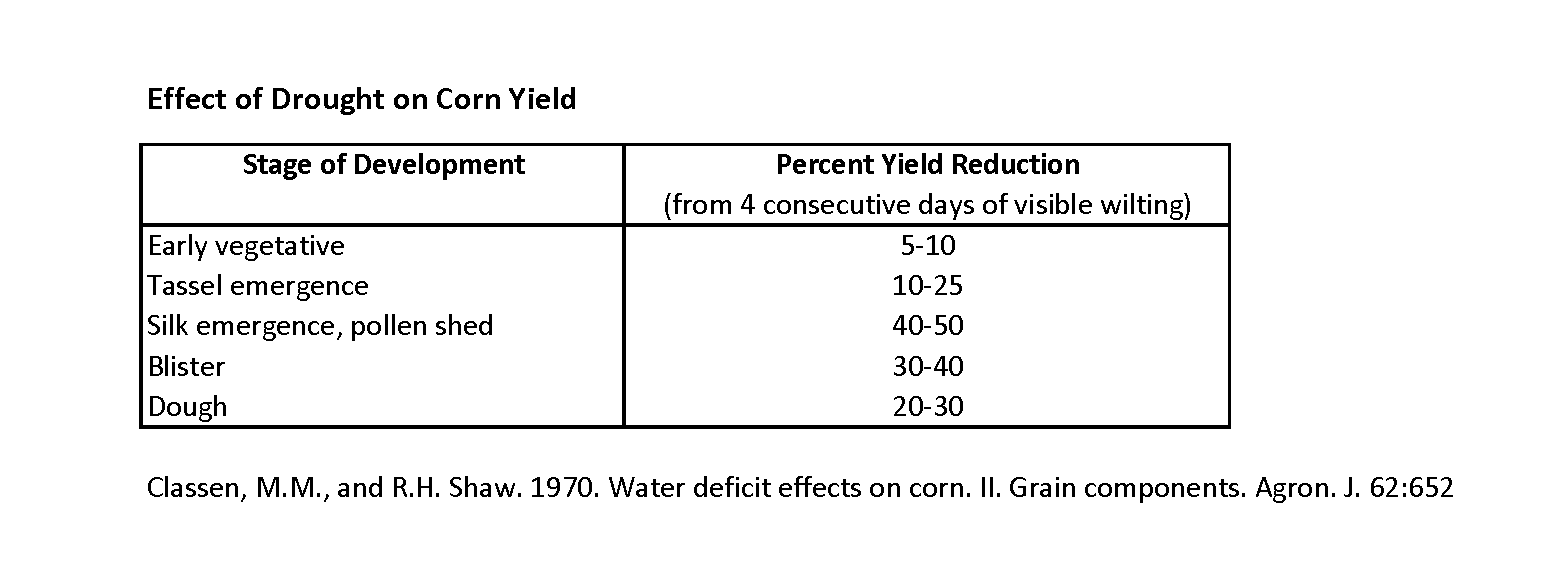Effects of Drought Stress on Corn

In recent years, we have dealt with drought stress in corn a lot. Most frequently, it has been overcome by timely rains and not had an impact province-wide. 2021 doesn’t appear to be letting up on the crop completely and reproductive stages of corn are just around the corner. Some sheltered areas along tree rows and yards are even beginning to tassel.
So, what happens to the plant when there isn’t enough moisture? Most visibly, corn leaves begin to curl and make the plant resemble pineapple leaves or onion greens. This occurs because the leaves are protecting themselves from excessive moisture loss or transpiration. Believe it or not, the more readily a plant curls its leaves up, the more beneficial it is to that plant. This year it is hard to determine with absolute positivity whether those plants are protecting themselves, or really in dire straits for moisture availability. There is no question, though; leaf rolling is a response to moisture deficits and it is widespread. This transpiration increases as leaf area increases and it is the mechanism that water moves from the soil, through the plant and into the atmosphere. If leaf rolling is resulting from true drought stress and occurs for 12+ hours a day, grain yield is likely to decrease, even prior to reproductive staging.
Right now, mid-July 2021, the crop is at a detrimental stage for water requirements. The corn is a little behind “normal” as a result of the lack of moisture and high heat combination, so on a regular year the corn would likely be at tassel (VT) or silking (R1) stages. “Potential ear size is already determined by the time silks emerge from the ear shoots. In fact, potential kernel row number is set by the 12-leaf collar stage (about chest-high corn.) Potential kernel number per row is determined over a longer time period, from about the 12-leaf collar stage to about 1 week prior to silk emergence” (https://www.agry.purdue.edu/ext/corn/pubs/corn-07.htm).
We know that row number is heavily predetermined through genetics, but kernels per row is not and has a strong sensitivity to environmental stresses. Below is a table identifying the potential yield reduction from drought stresses (with 4 consecutive days of leaf wilting) throughout the growing season.
Severe drought stress has the greatest impact during silk elongation, which often results in poor pollination. Silks on the base of the ear begin to elongate first, followed by those from the center and then the tip of the ear. So, when plant water is in low supply, the silks elongate slowly and may not even elongate beyond the husk. If the silk isn’t outside the husk during pollen shed, it will not pollinate those potential kernels. During these conditions, silks that do emerge have an increased chance of desiccating quickly, making them unable to receive pollen.
There is no gain made in worrying about what may happen over the next few weeks. What is promising is that corn has an amazing ability to recover from drought stress when it does receive rain. It is very unlikely that no pollination will occur whatsoever, but if dry conditions persist, it is likely that grain will not fill to its full potential. This is where rain events can really improve grain quality and the length of the crop’s life after it has been under severe stress.
Farming through a drought is something Manitobans haven’t had to do in decades and it is a steep learning curve. The best thing you can do is choose wisely where to put crop inputs and where not to. Producers are all under a great deal of stress this year, but we are all here to provide each other with the support we need. This year is teaching us a great deal about what crops and what fields handle a lack of moisture the best, in the same way that we learned about excess moisture tolerance in past years.
With that being said… time to go fishing??

